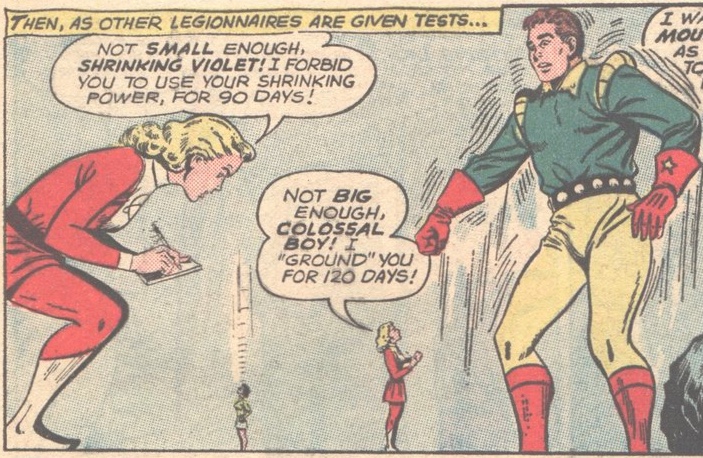
Good morning everyone,
Over two months ago, There She Grows examined size themes in comic books during the Golden Age of Super Heroes. Today, let’s continue that analysis with the Silver Age stretching from 1956 until 1970. For the purposes of this article, the start date was the first appearance of DC Comics character Barry Allen as the new Flash, published in Showcase #4 in October 1956. The end date was when DC Comics editor Julius Schwartz turned over the Green Lantern comic to Denny O’Neil and Neal Adams in April 1970.
Barry Allen as the Flash was the first in a wave of new super heroes. DC’s Martian Manhunter (a.k.a. J’onn J’onzz) was created almost a year before the Flash in Detective Comics #225 from November 1955, but the Martian Manhunter was initially a police detective who secretly used his alien abilities to solve cases. Thus, at first he was more a cop than a costumed super hero. The Flash himself took a little bit to catch on, but he became popular after his third appearance in Showcase #13. Julius Schwartz was a DC Comics editor who oversaw the creation or re-imagining of characters such as the Flash, Green Lantern, the Atom, etc. DC’s success with super heroes spurred Marvel Comics owner Martin Goodman to direct Marvel editor and writer Stan Lee to make new super heroes. After Julius Schwartz turned over Green Lantern to Denny O’Neil and Neal Adams they used that title to tackle real-world problems like drug abuse and pushed back against censorship. Although, Marvel had published a Spider-Man issue dealing with drugs not long before DC’s foray into the topic.
(NOTE: The beginning and end dates for the comic book ages can certainly be debated. However, I had to chose something to frame this analysis. Additionally, DC and Marvel Comics operated under different names over the years, but I used their modern names for the sake of clarity.)
Before we begin, I must express my heartfelt gratitude to Ms. Taedis. She provided a wealth of information about the Golden Age and did so again for the Silver Age. Hopefully, my constant requests have not annoyed her too much and we can collaborate again in the future.
Now, without further ado, it’s time to dive into the Silver Age!
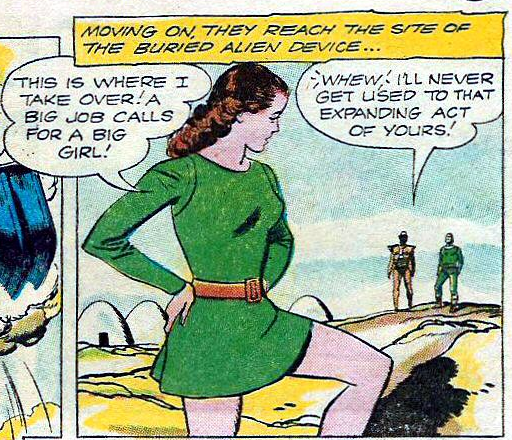
The Silver Age of American comic books was an important time. This was the era in which Marvel Comics was born! The company had already existed, as Timely then Atlas Comics, for awhile, but most of its most famous characters were not born until the 1960s. The Fantastic Four, the Incredible Hulk, the Mighty Thor, Iron Man, Spider-Man, Ant-Man and the Wasp, the Avengers, and the X-Men were all created during the Silver Age. It was only after those new heroes saw the light of day that Golden Age heroes Namor the Sub-Mariner, Captain America, and the Human Torch returned. The Sub-Mariner became a love interest of Sue Storm in the pages of the Fantastic Four. Captain America became an Avenger after being recovered from the ice, but the Avengers already existed before Captain America joined. And the android Human Torch lent his name and powers to Johnny Storm of the Fantastic Four.
Before the Silver Age rebirth, the vast majority of super heroes still in publication were from DC Comics. Batman, Superman, and Wonder Woman were still in print, but many of their fellow DC heroes such as Aquaman, the original Green Lantern, the original Flash, Hawkman, etc. had been set aside.
Fawcett Comics’ Captain Marvel ended publication in 1953, due to a lawsuit from DC Comics alleging copyright infringement and due to declining sales overall. Decades later DC would buy the rights to Captain Marvel and eventually rename him Shazam.
Quality Comics’ Doll Man ended in 1953. Plastic Man, also from Quality Comics, was published (just barely) into the Silver Age, but his self-titled comic ended when Quality Comics went defunct in December 1956. Their character trademarks were eventually bought by DC Comics. Doll Man and Plastic Man were eventually incorporated into, but never fully embraced by, the DC Universe.
Marvel shifted from super heroes to science fiction and supernatural tales during the later half of the Golden Age. This trend persisted during the first part of the Silver Age with one-off stories such as “I am the Giant from Outer Space!” in the anthology series Tales to Astonish #3 from May 1959.
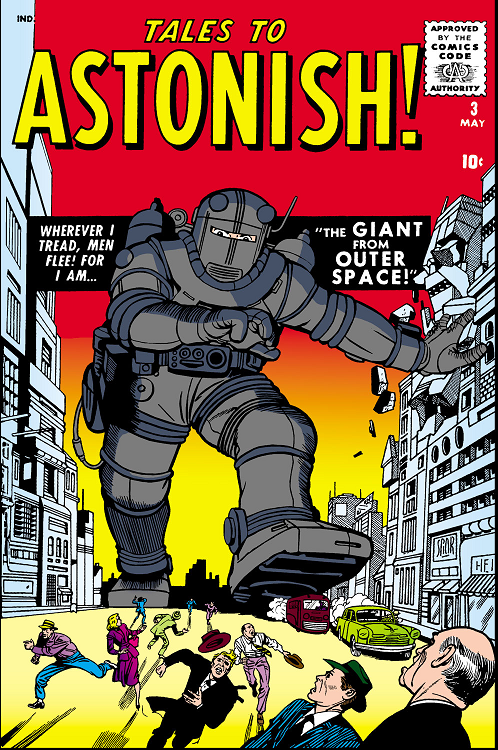
Note the Comics Code Authority (CCA) stamp on the above cover at the top right. Along with being the era in which Marvel Comics were born, the Silver Age was when the CCA was the most influential and restrictive. These rules for comic books were created by the Comics Magazine Association of America in September 1954 to regulate their industry. (NOTE: The CCA replaced the Association of Comics Magazine Publishers (ACMP) Publishers Code of 1948 which had proven ineffective.) The CCA stamp was never required by law, but distributors wouldn’t handle comic books without it. This was a strong incentive to comply.
This censoring was prompted by a nationwide concern that comic books were contributing to juvenile delinquency. Accordingly, several municipalities across the U.S. attempted to ban what they considered to be “bad” comic books and there were public burnings of comic books. Psychiatrist Fredric Wertham waged a campaign against comic books by participating in interviews, publishing several articles, and releasing his book “Seduction of the Innocent: The Influence of Comic Books on Today’s Youth” in April 1954.
The Comics Code was modeled after the Motion Picture Production Code which came into effect in 1934. The Motion Picture Production Code was also known as the Hays Code, taking that name from Will H. Hays who served as President of the Motion Picture Producers and Distributors of America until 1945. The modern era has seen similar self-regulation such as the Entertainment Software Rating Board (ESRB) for video games.
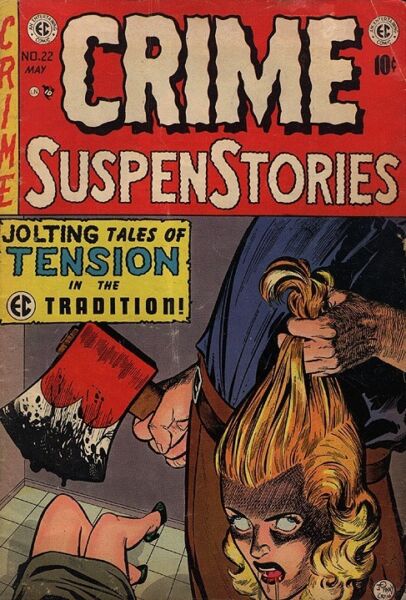
Provocative images such as the above cover from EC Comics was shown during the United States Senate Subcommittee on Juvenile Delinquency hearings in April and June 1954, along with testimony from Dr. Wertham. That led to the industry adopting the Comics Code a few months later.
The Comics Code killed EC Comics and many of its provisions may have been written with that very intent in mind! For example, the code restricted titles which included “Horror,” “Terror,” or “Crime.” It just so happened that EC Comics published “The Vault of Horror,” “The Crypt of Terror” later renamed “Tales from the Crypt,” and “Crime SuspenStories.”
However, while their comics ended EC continued to publish MAD magazine. MAD started out as a comic, but transitioned to a magazine in 1955. Being a magazine, it was exempt from the Comics Code. MAD found success and its mascot Alfred E. Neuman (pictured below) became famous:

In addition to horror-related titles, the Comics Code also forbade the discussion of supernatural entities such as ghouls, vampires, walking dead, and werewolves. Therefore, Robert Kirkman’s “The Walking Dead” would have been expressly forbidden. This led to thinly disguised efforts to feature those forbidden monsters without violating the code. DC’s Superman fought “Count Dragorin from Transilvane” (an artificially created life form) and Marvel’s Brother Voodoo fought “zuvembies.” Zuvembie was used by Marvel to avoid the word zombie, but the term was first coined by Robert E. Howard for female zombies.
Surprisingly, some horror comics were allowed during the Silver Age if they were careful to avoid the specific tropes that had become forbidden:
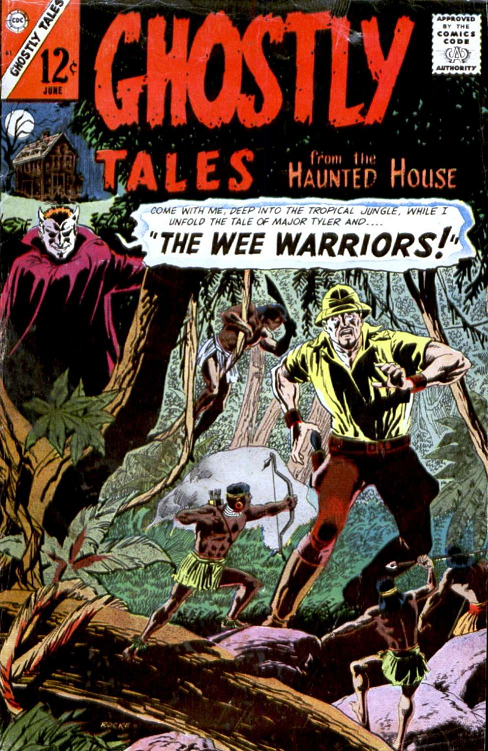

Note at the bottom of the above screenshot that there is a line stating “Females shall be drawn realistically without exaggeration of any physical qualities.” So, would that stipulation preclude drawing characters that resemble real women like the model Abbi Secraa, seen below? She has not undergone cosmetic surgery or had breast implants. Her body is all-natural. Nonetheless, some might argue that her physical qualities are exaggerated. Or to put a finer point on the matter, she has really large tits! Thus, would the CCA have found fault with any artist would tried to accurately draw this lovely lady because her breasts were too big?

At a minimum, comic artists should be permitted to draw real people. I am dismayed at the thought that certain women could never have been depicted because their breasts were too large, their butts overly big, etc.
Yet, I would not be at all surprised if the CCA would have blocked anyone that tried to put Abbi Secraa in a comic. I’m not claiming that a nude Abbi should have been plopped down on an Archie Comics cover with her legs spread open, but I am stating that showing Abbi in a bikini should have been permitted. Instead of pretending that such women do not exist, it would be have been better to allow the representation of different body types. Better to have taught kids that people come in many shapes and sizes than to ignore those people whose looks don’t fit into the so-called “norm.”

Additionally, while one line of the Comics Code stated “Ridicule or attack on any religious or racial group is never permissible” in practice the administrators sought to downplay minority representation. For example, the EC Comics story “Judgement Day,” which featured an African-American astronaut, was rejected in 1956. Comics Code Administrator Charles Murphy wanted the character to be changed, but EC Comics refused. Of note, Judgement Day had initially been published in a pre-Code EC Comic from 1953. You can read the entire story in this post from The Comics Cube “EC Comics’ Judgment Day – Simultaneously Outdated and Still Relevant.”
Bottom line, a lot of creativity, innovation, representation of minorities and women, and unique storytelling was blocked by the Comics Code. For more information on that topic, I recommend “How Censors Killed The Weird, Experimental, Progressive Golden Age Of Comics” by Saladin Ahmed and “The insane history of how American paranoia ruined and censored comic books” by Alex Abad-Santos.
Most publishers submitted their books to the Comic Code Authority for its approval. Those who did not, such as Dell Comics and Gold Key, policed themselves.
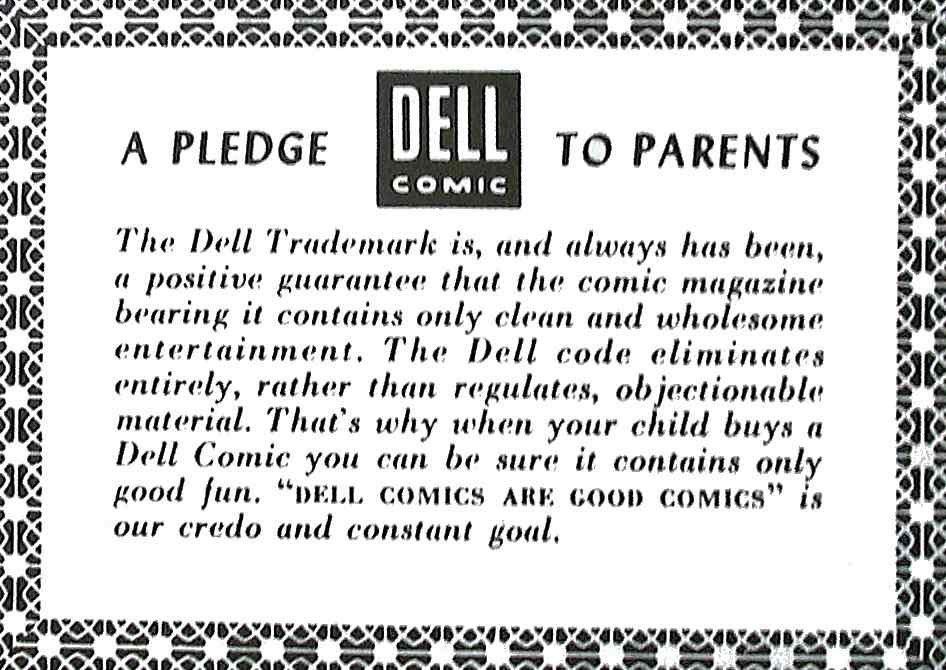
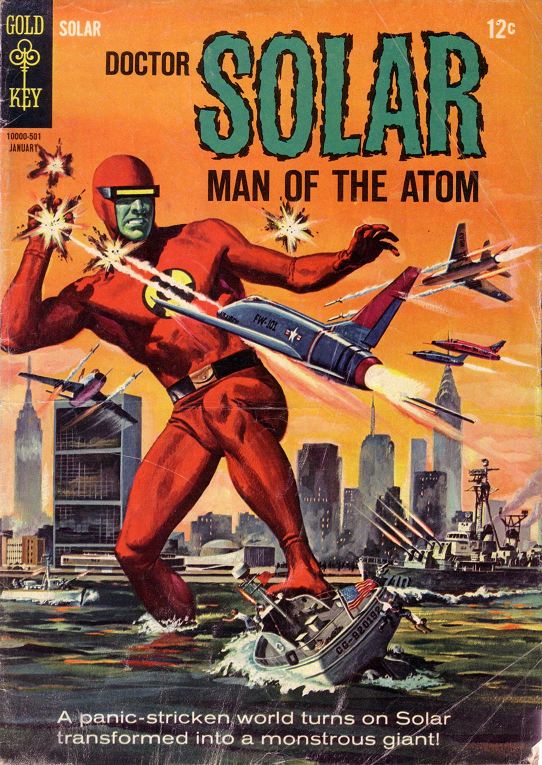
Some artists, like Robert Crumb, managed to draw adult comics during this era, but these independent underground comics had much smaller circulations than mainstream comics.
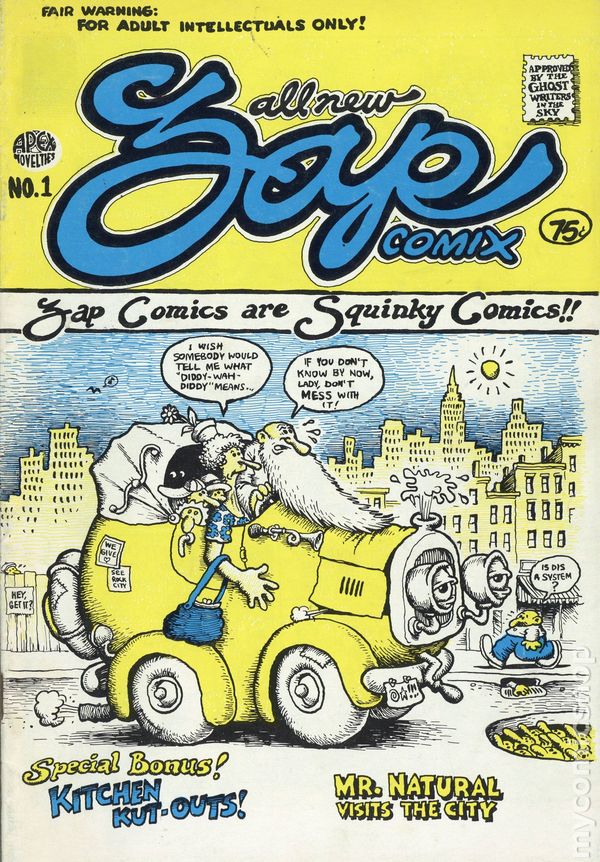
Overall, strict censorship was the norm during the Silver Age. Perhaps due to that restrictive environment, “safe” topics like wacky transformations were promoted. Depict Superman fighting the undead? No way! Provide a nuanced portrayal of criminals? Dear heavens, no! Tell a Spider-Man story with an anti-drug message? Nope, the mere mention of illegal drugs was taboo during the Silver Age. So, if all those are forbidden then what about something off-the-wall like hitting Superman’s girlfriend Lois Lane with a fattening ray? Sure, you can do that.
Therefore, the Silver Age was full of crazy metamorphoses, giants, and tinies.
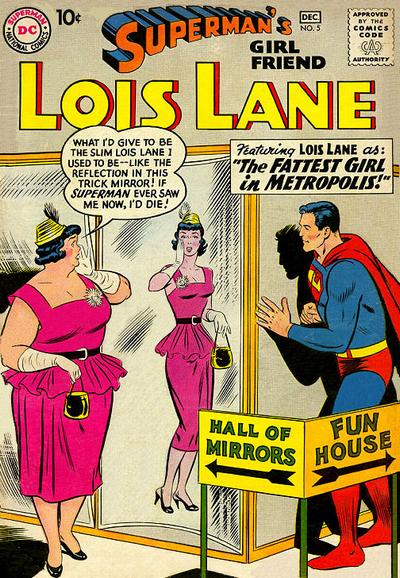
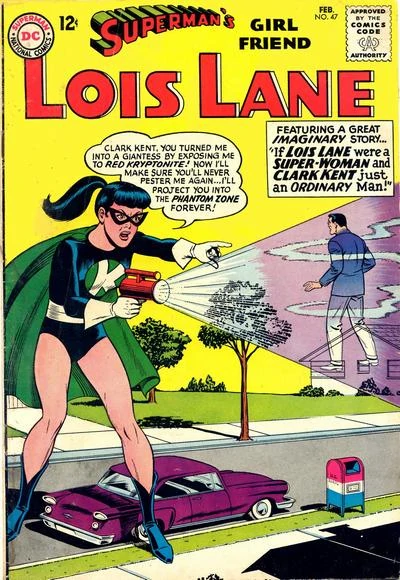
Superman himself experienced rapid weight gain as a boy. Albeit, that was caused by aliens. (Solomon makes mental note to tell wife that aliens are also responsible for his weight gain 😉 )

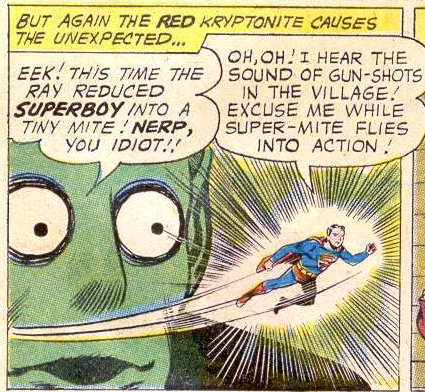
That same issue also gave readers a tiny Superboy!
In general, it’s difficult to list every appearance of size themes in Superman comics. There were so many of them! For example, alien villain Brainiac first appeared in July 1958. His modus operandi or M.O. was traveling through the cosmos and miniaturizing cities to add to his personal collection:
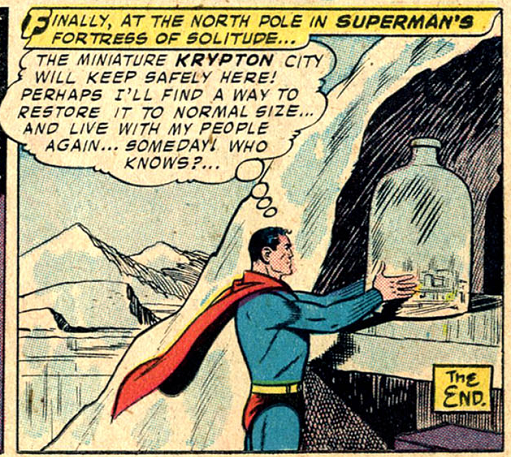
Brainiac shrunk metropolis like New York and Paris and placed them within bottles on his space ship, but Superman was eventually able to restore them. While exploring Brainiac’s vessel Superman also discovered Kandor, a city taken from Krypton before it exploded! However, before Superman can use the last remaining enlarging charge to restore Kandor, a Kandorian scientist (conveniently a former college roommate of Superman’s Kryptonian father 😉 ) used that final charge to return Superman to normal. Since then, the city of Kandor has (mostly) remained small.
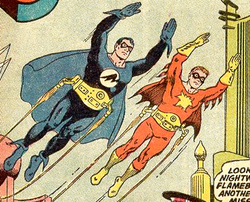
The Bottle City of Kandor allowed Superman to interact with Kryptonian society without the writers having to explain how humans would be changed by the presence of a city’s worth of super-powered aliens. Instead, these Kryptonians were (mostly) confined to their bottle. Kandor appeared in many subsequent issues. Superman and his pal Jimmy Olsen even shrunk themselves down during Superman #158 and patrolled there as the crime-fighting duo Nightwing and Flamebird. (NOTE: The vigilante Dick Grayson, formerly the first Robin, would later use the name Nightwing.)
Like Kandor, red kryptonite also first appeared in 1958. Instead of killing Kryptonians like green kryptonite could, red kryptonite produced random, but temporary effects. That made for fun stories, but red kryptonite became a crutch for the writers and was used too frequently. For example, how to explain Superboy shrinking? Red kryptonite! How to explain Supergirl fighting a double of herself? Red kryptonite! How to explain Superman turning tiny? Red kryptonite! How to explain Superboy turning giant? Fluoride in the drinking water! Err, I meant red kryptonite! Or “Red K” as us cool kids call it 😎
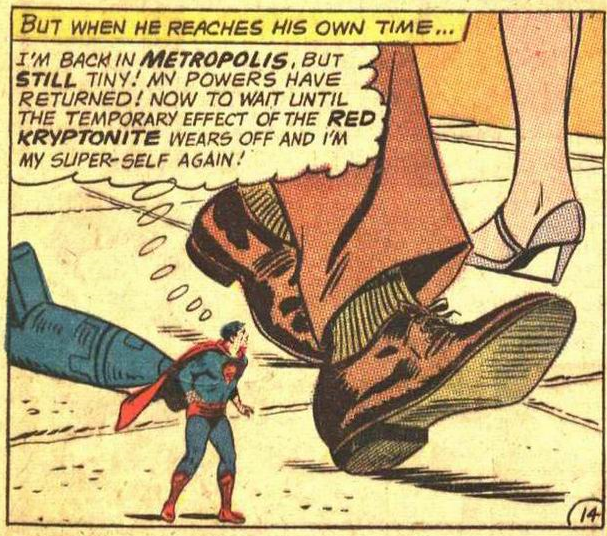
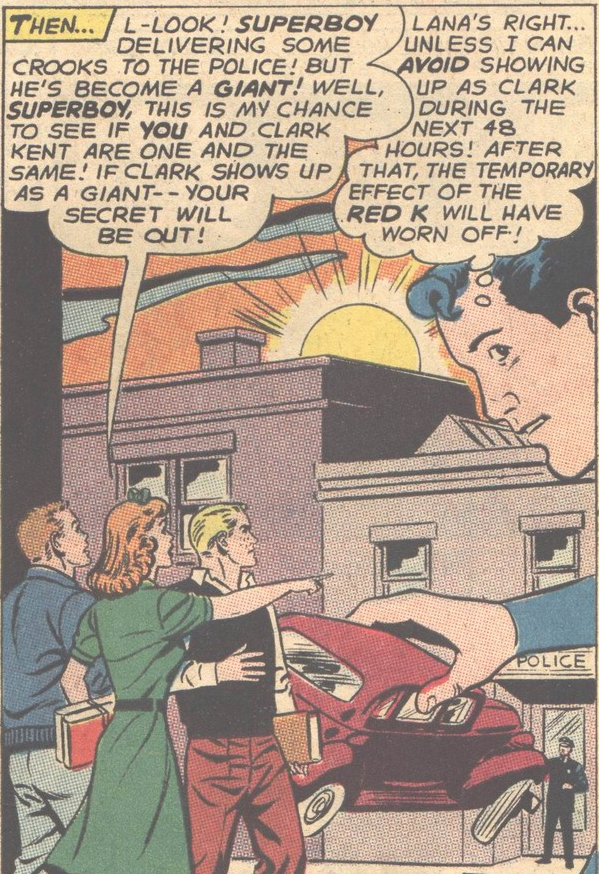
To be fair, there were many titles featuring the Man of Steel:
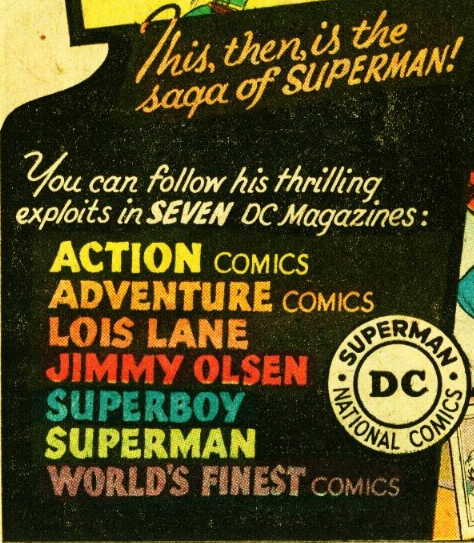
Therefore, given how many Superman comics were published concurrently it is understandable why writers continually used red kryptonite as a MacGuffin.
In addition to the last son of Krypton, his pal Jimmy Olsen, a junior reporter at the Daily Planet, went through his own fair share of dramatic transformations! Sometimes being both minuscule and gigantic within the span of a single issue!
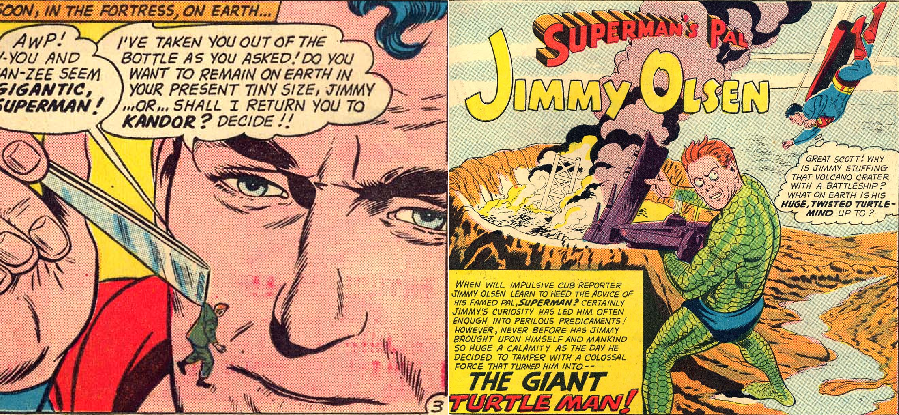
Jimmy’s most frequent transformation was into a super hero called Elastic Lad with powers temporarily granted by drinking a special liquid. Alas, this had drawbacks:
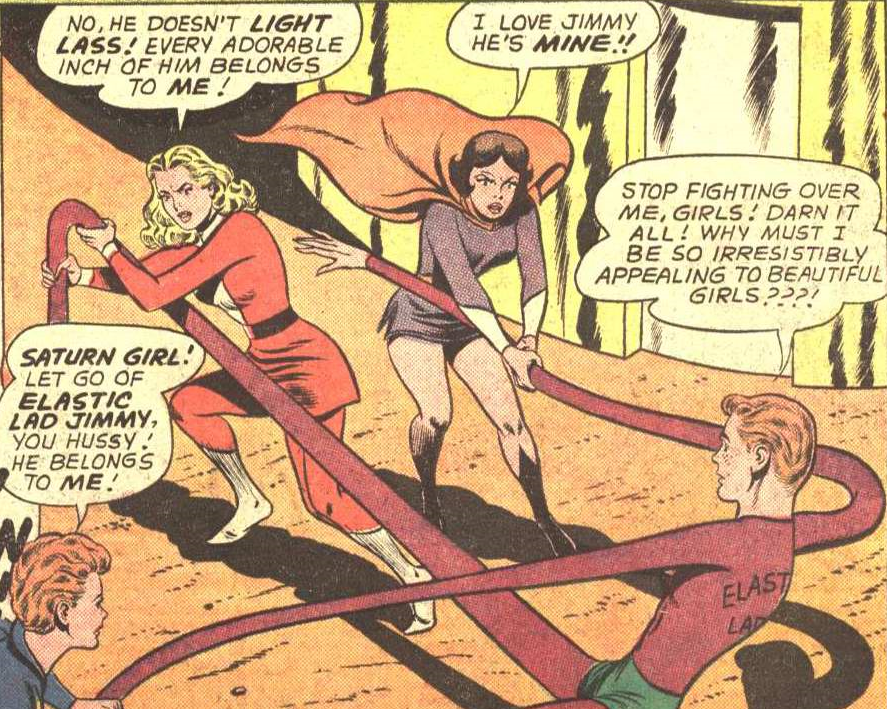
Observant readers will have noticed those costumed girls pining for Jimmy. Those lovely ladies belong to the Legion of Super-Heroes! (NOTE: One of their panels adorns the very top of this article!) The Legion of Super-Heroes was a group of teenage vigilantes from the 30th century who were first introduced in Adventure Comics #247 from April 1958. The Legion became popular and appeared in many Superman titles. Initially, the idea was that they were all teens (members were kicked out when they turned 18) and each had one super power. The single super power rule was initially followed, but later members such as Mon-El bucked the trend.
Pertinent to today’s article, the Legion of Super-Heroes contained members with size-changing powers! For instance, Colossal Boy (a.k.a. Gim Allon) first appeared in Action Comics #267 in August 1960. As the name implies, he could turn into a colossus!
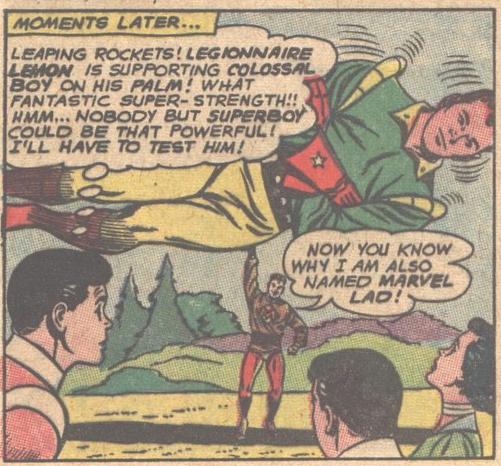
A little while after Colossal Boy joined the Legion, he was joined by Shrinking Violet (a.k.a. Salu Digby) in Action Comics #276 from May 1961.
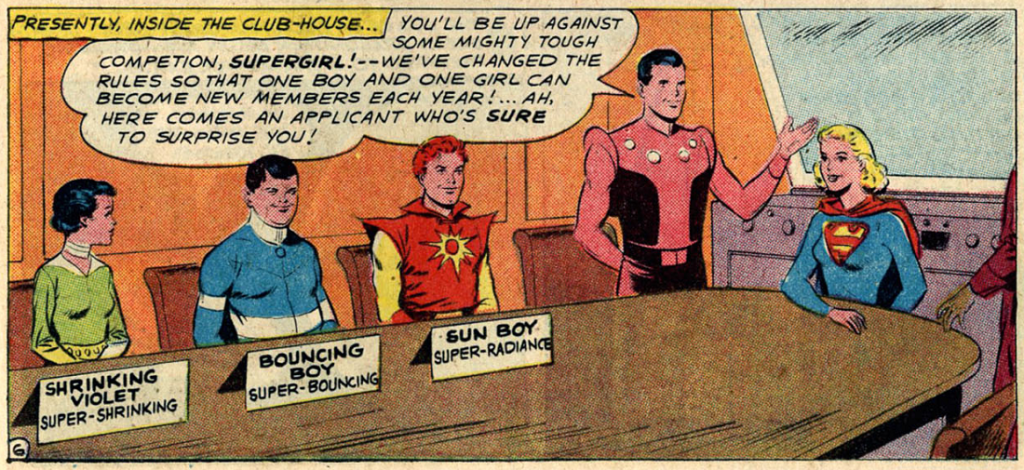
Special mention should also be given to Chameleon Boy whose gimmick was shape changing. This ability included becoming doll-sized which allowed him to accompany Shrinking Violet into a town of tiny people:
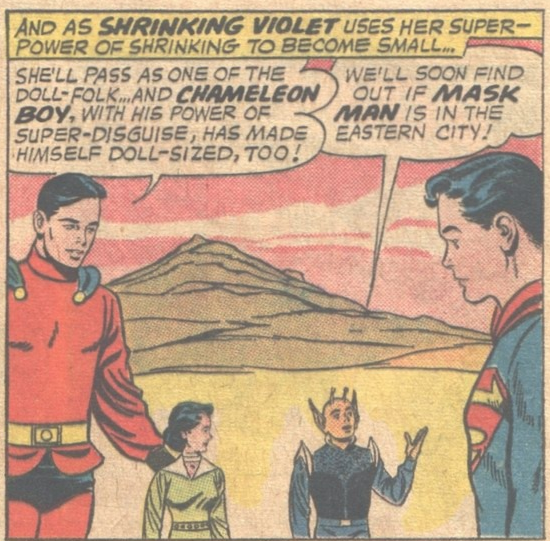
Reducing people also played a role in other Legion stories, such as when evil spies shrunk and inserted themselves into the bodies of Legionnaires! (As you do… 😉 )
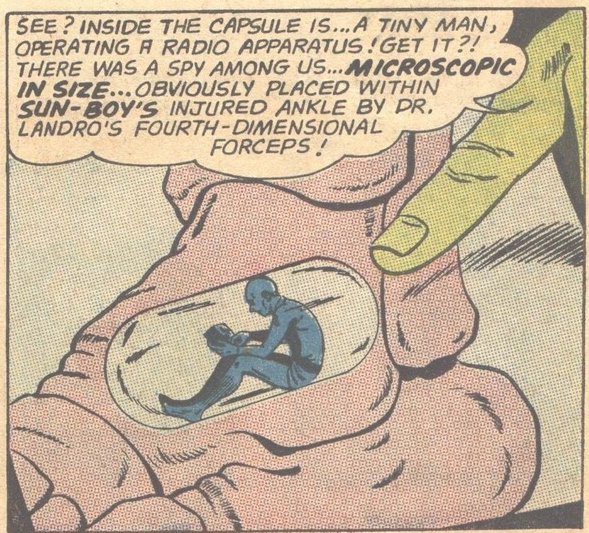
Or when the girls in the Legion were tricked to attack their male counterparts:
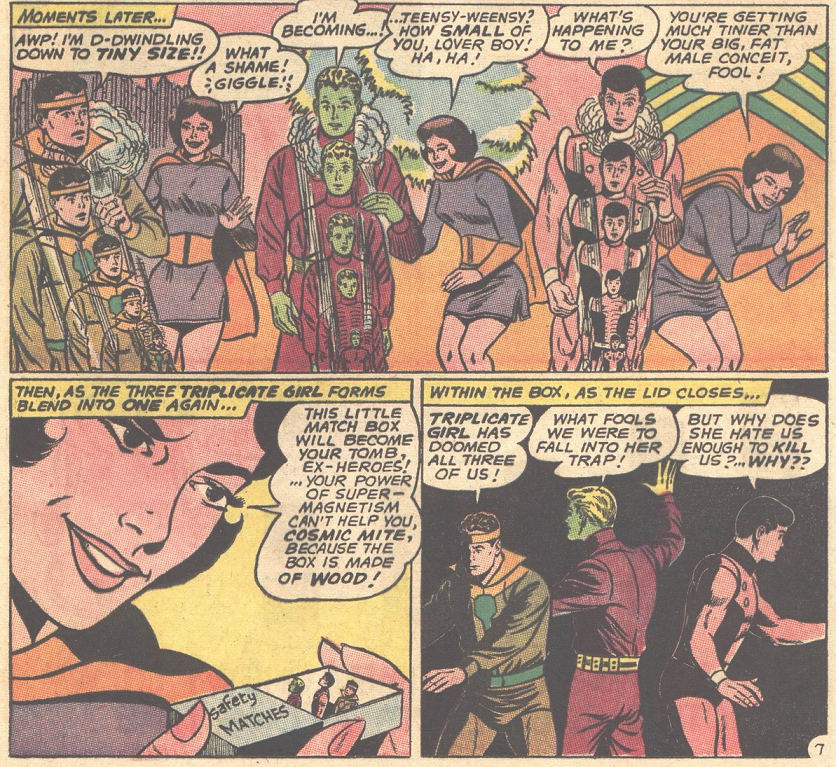
Next, we’ll transition to another Golden Age DC character whose run continued uninterrupted into the Silver Age. Time for some Wonder Woman comics! I like to dedicate a small bit of time to one of these greatest covers crafted in all of comic history. I strongly suggest that growth fans grab a copy of Wonder Woman #136 from February 1963!
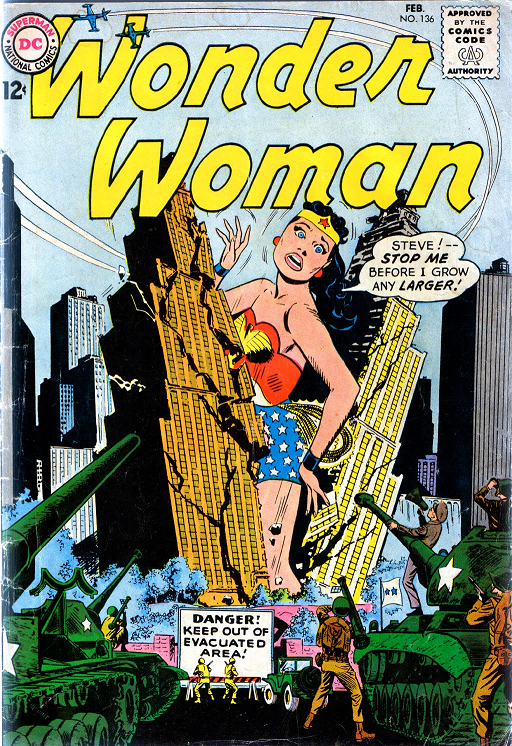

And just so the shrink fans do not feel overlooked, there was also the introduction of Wonder Woman enemy Mouse Man within the pages of Wonder Woman #141 from October 1963. The cover of which is shown to the left. Mouse Man had been permanently reduced to the height of six inches and also possessed the ability to control mice.
To the best of my knowledge, Mouse Man’s final appearance during the Silver Age was in Wonder Woman #171 from July 1967. Although, he did eventually re-appear during the modern era in an issue of “The All-New Batman: The Brave and the Bold” from 2011.
Other DC Comics had size too. For instance, the Challengers of the Unknown would shrink or grow for a single issue before returning to the status quo:
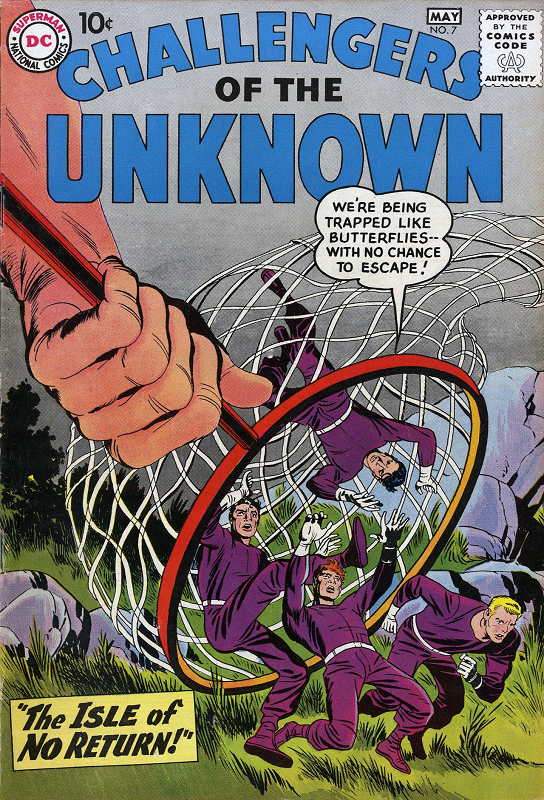
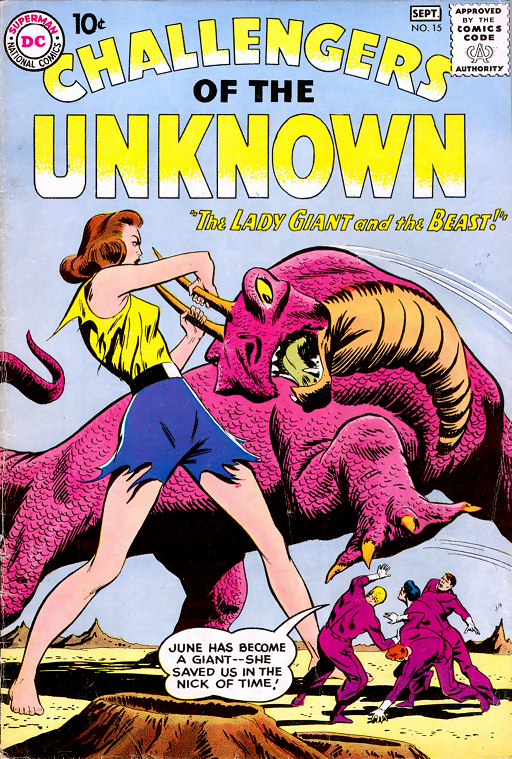
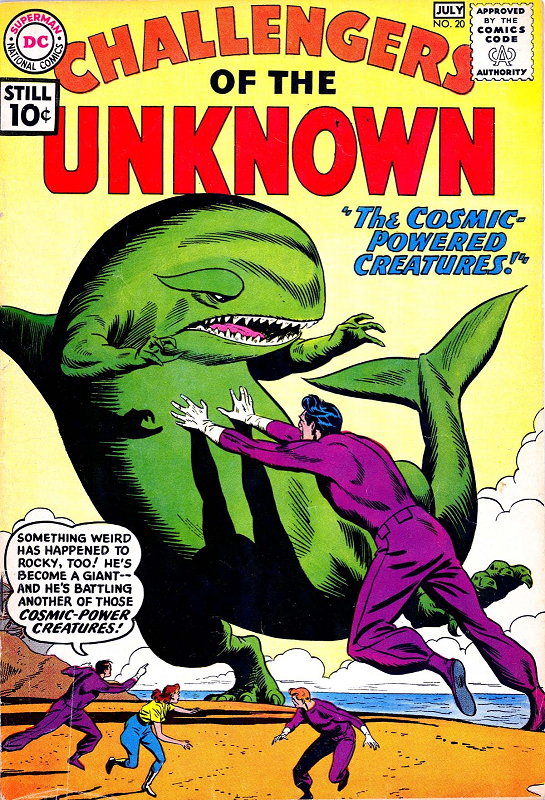
Not wanting organic life forms to hog all the giant-sized fun, the Challengers of the Unknown also fought the stupendously tall Multi-Woman robot on many occasions!
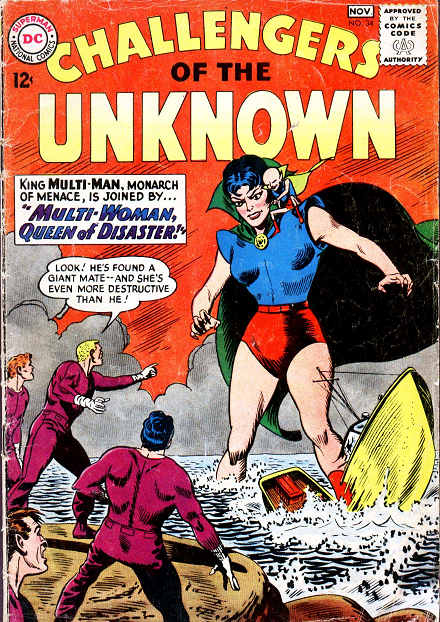
Far be it for DC to allow only the Challengers to engage in size hijinks, the Sea Devils also partook:
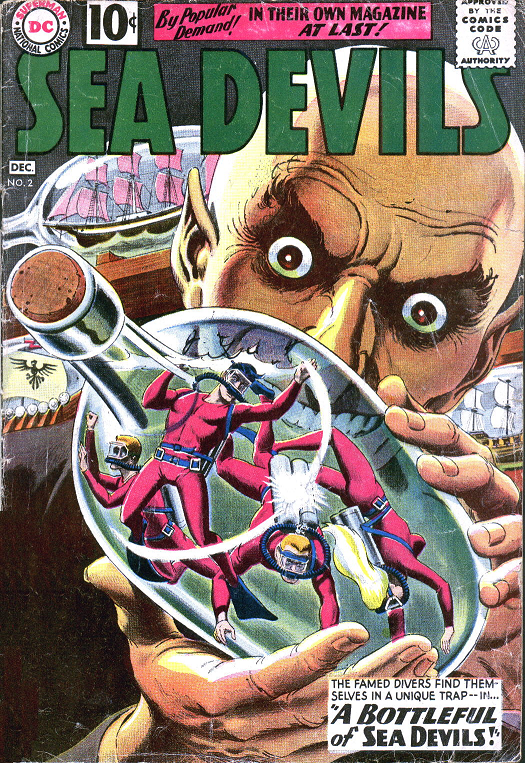
The Sea Devils might not have grown super-humanly large, but they did met undersea Titans:
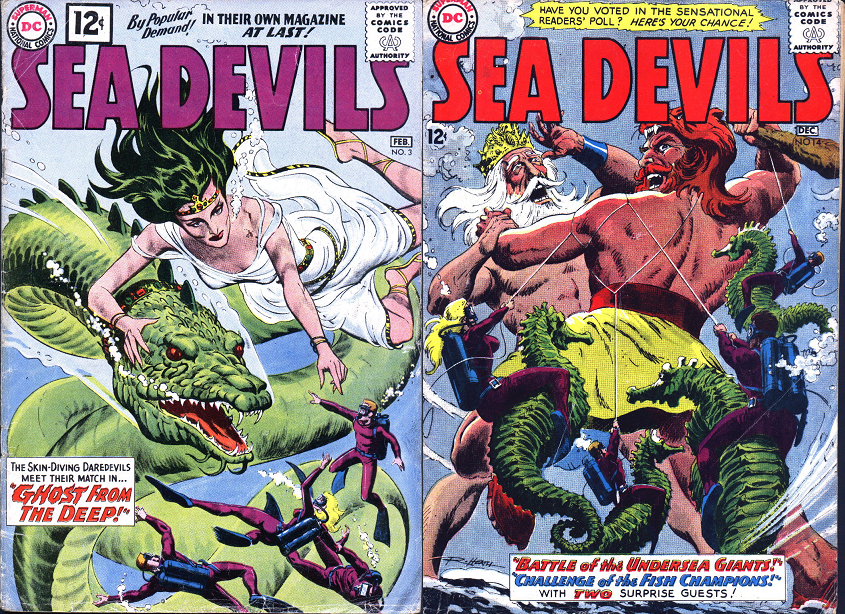
And the number of oversized humanoid monsters encountered by the Sea Devils is too many to list!
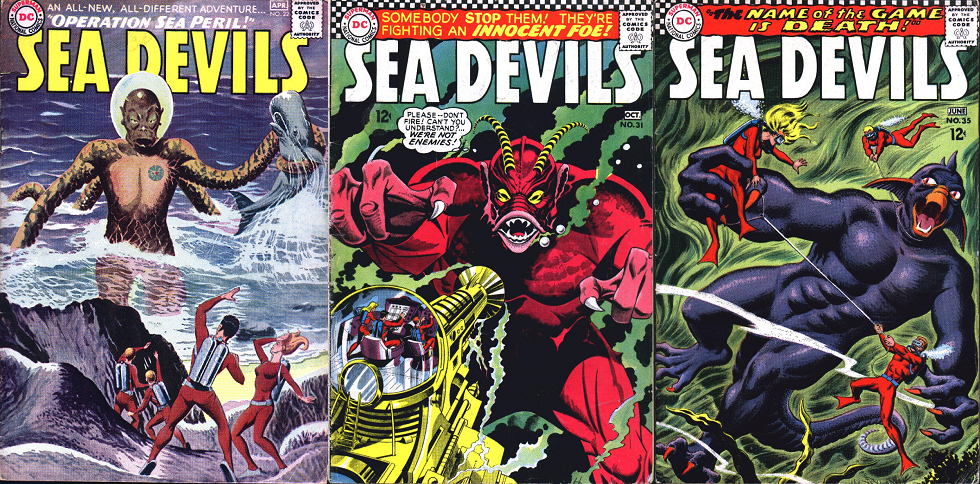
However, two DC Comics regularly and prominently featured size changing during the Silver Age. First, came the Atom:
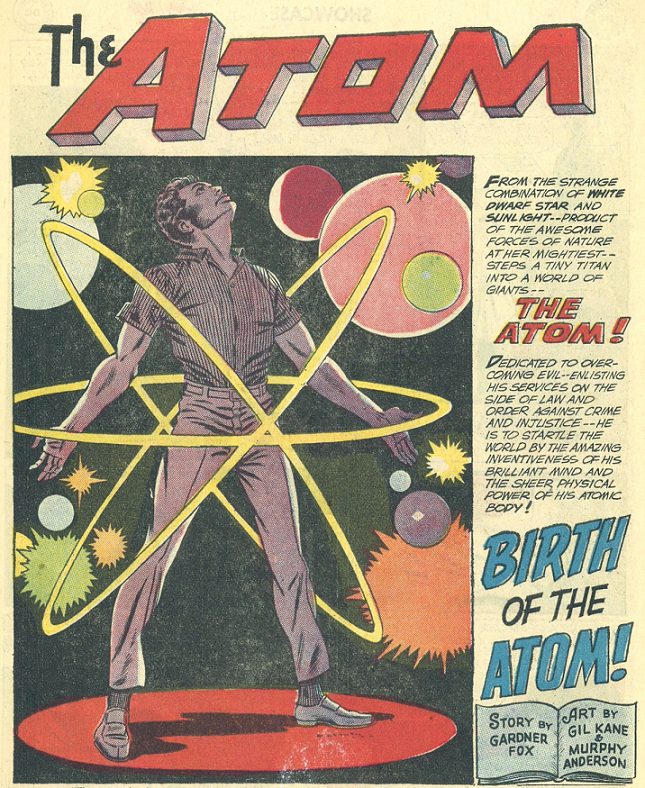
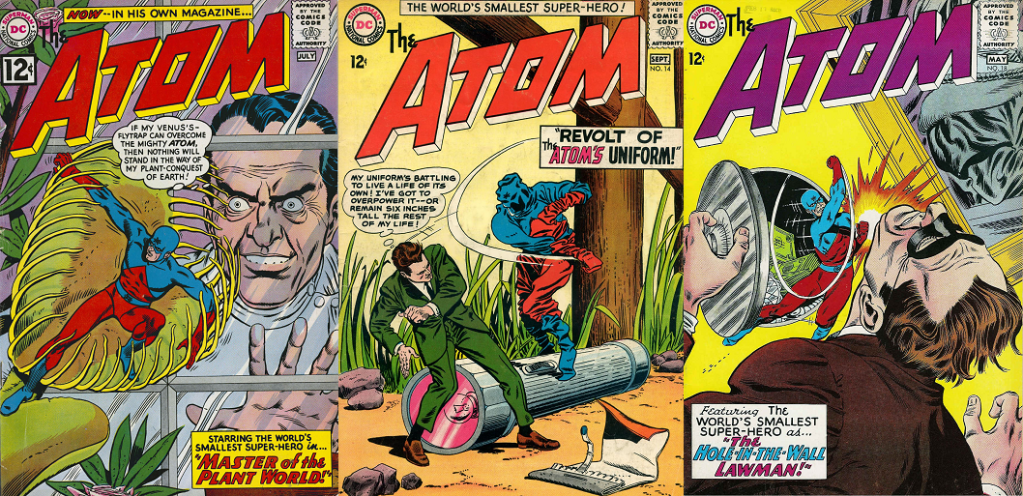
Ms. Taedis is particularly fond of Atom issue #14, above center, and I also heartily recommend it. Furthermore, Taedis wrote a loving tribute to the Atom entitled “The Boy In The Silver Atom.” It’s a must read!
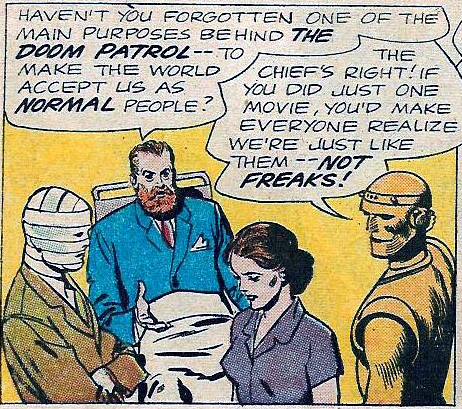
The next DC Comic which prominently featured size changing , and the one closest to my heart, was Doom Patrol! This team first appeared in My Greatest Adventure #80 from June 1963. Earlier in this article I briefly mentioned Elasti-Girl; she was joined by the Chief (wheelchair-bound scientist Dr. Niles Caulder), Negative Man, and Robotman. Negative Man was wrapped in bandages to protect others from his radioactive body. Additionally, he could send out an energy being, but they could only be separated for 60 seconds or Negative Man would die! Robotman was a race car driver whose brain was transplanted into a robot after a terrible accident. (NOTE: Super-powered characters Beast Boy and Mento, Rita’s adopted son and her husband, assisted the team in later issues, but they were not regular members.)
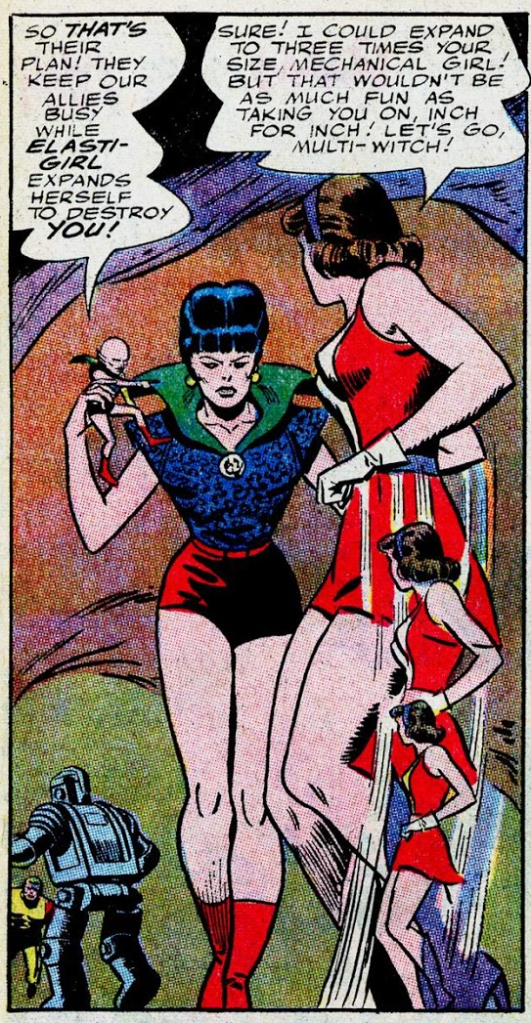
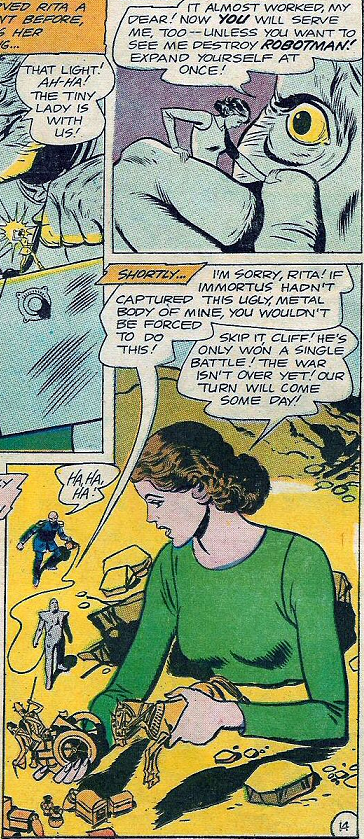
During their first appearance the Doom Patrol members were described as “… four outcasts of the world …” Later issues called them “freaks” and “misfits.” This set them apart from other super-heroes since their powers were not just bonuses, but also minuses. They were granted extraordinary abilities due to strange accidents, but they also suffered. Chief lost the use of his legs. Negative Man was covered with bandages and ostracized by others. Robotman was similarly isolated due to his mechanical body. However, the label “misfit” was a misnomer for Rita Farr. The Chief, Negative Man, and Robotman were unable to hide their afflictions. Conversely, after the initial onset of her morphing ability, Rita had full control of her powers. She would not grow or shrink unless she chose to do so. Or if a super-villain invented weird gas to make her body compress itself against her will. Baring that last, Rita had complete control. So, she could simply live out her life and no one would know of her unique nature. Negative Man and Robotman were not so lucky!
In fact, within the issues of Doom Patrol Rita was able to live a fairly normal life. She was often described as pretty and was wooed by Steve Dayton, the 5th richest man in the world. Steve Dayton built an helmet to magnify his mental abilities and called himself “Mento.” Rita and Steve adopted the green-skinned Beast-Boy and the three lived as a family.
Fans wanting to read the original Doom Patrol run will have to start with My Greatest Adventure #82. The title was renamed Doom Patrol for issue #86 and the entire team was killed in Doom Patrol #121. Further complicating collecting efforts is the fact that issues #122 through #124 were released years after the original run had concluded and were only reprints, not new stories.
Next it’s time to take a gander at a Captain Marvel comic book cover! Not a cover featuring Billy Batson as Captain Marvel, not Mar-Vell as Captain Marvel or Carol Danvers as Captain Marvel, and not Monica Rambeau as Captain Marvel either. Of course, I am referring to Roger Winkle as Captain Marvel from M. F. Enterprises! One of his foes was Tinyman, who I plan to discuss more thoroughly at a later date.
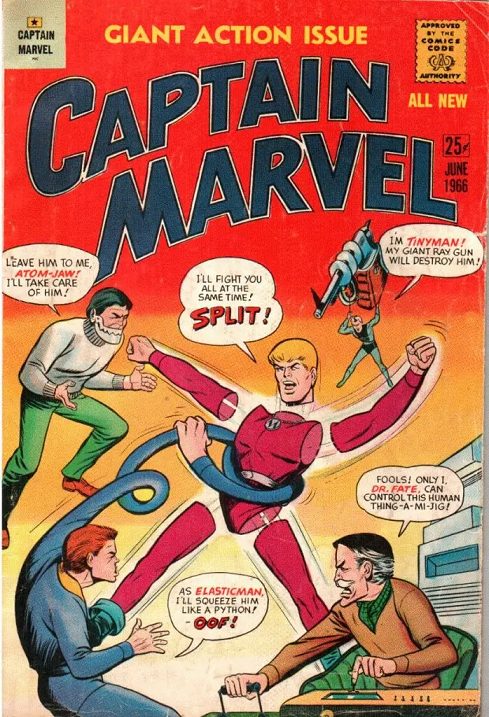
Alrighty, now that Captain Marvel got his all-too brief moment, let’s switch gears and look at Marvel Comics. Right up front, let me make my opinion known that DC used size more often and to greater effect than Marvel. In fact, if a size fan could only read a couple Silver Age comic runs than I would recommend DC’s Atom and Doom Patrol.
However, it would be a disservice to ignore Marvel’s efforts. Previously, a cover was shown of an one-off story featuring an immensely tall space explorer. Another size story appeared in Tales to Astonish #27 January 1962. In that issue Dr. Henry “Hank” Pym invented a serum which shrinks him to the size of an ant! Narrowly escaping danger, Hank Pym eventually regains his normal height and subsequently disposes of his reducing serum. By all indications, this was meant to be a single story.
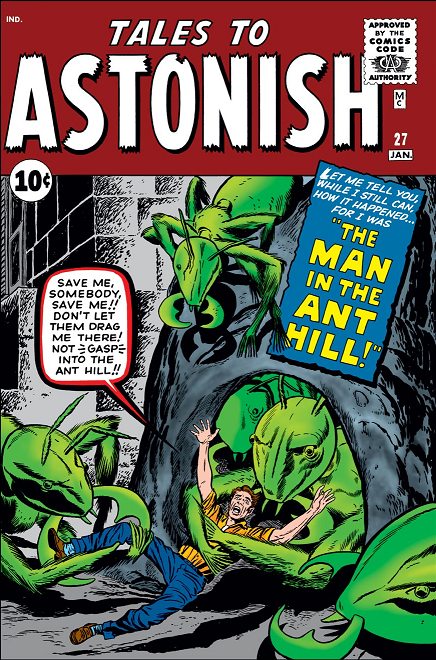
Additionally, it must be pointed out that Marvel might very well have been influenced by the earlier publication of “King of the Ants” in the pages of a Harvey Comic from the late 1950s.
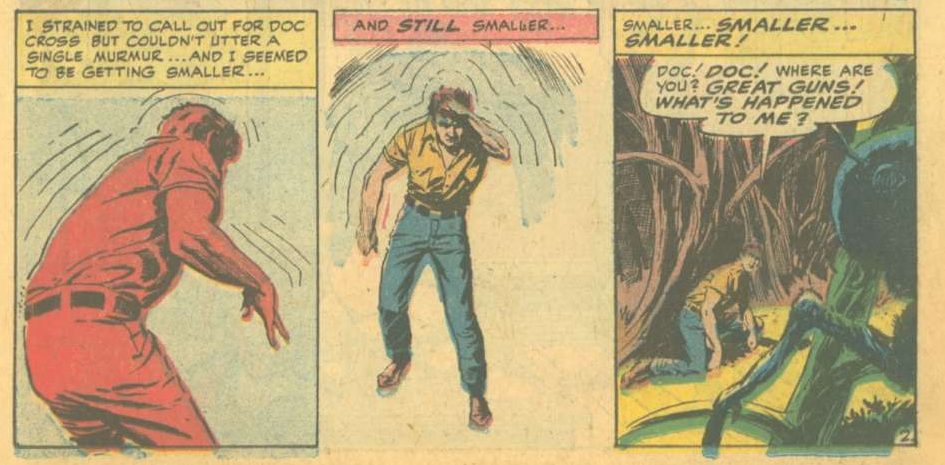
Regardless, Marvel Comics brought Hank Pym back as Ant-Man in Tales to Astonish #35 September 1962. (NOTE: The initial story spelled “Ant Man” without a hyphen, but that was replaced by a hyphenated version.)
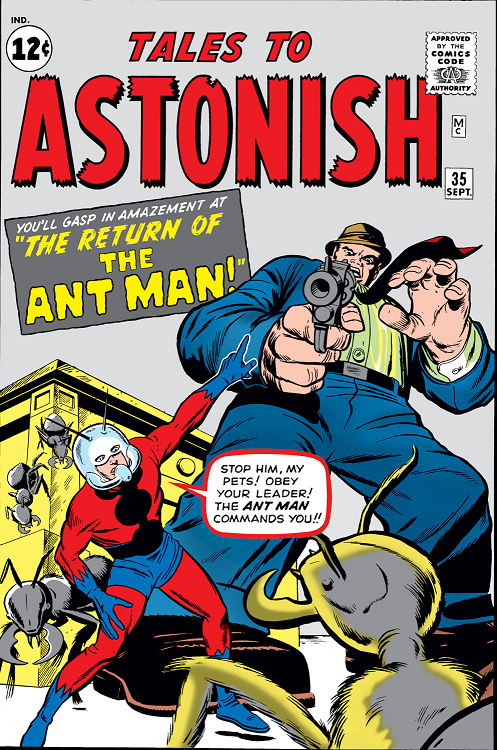
Ant-Man was joined by socialite Janet van Dyne in Tales to Astonish #44 June 1963. She was given the ability to make herself insect-size, as well as wings to fly, and became the Wasp!
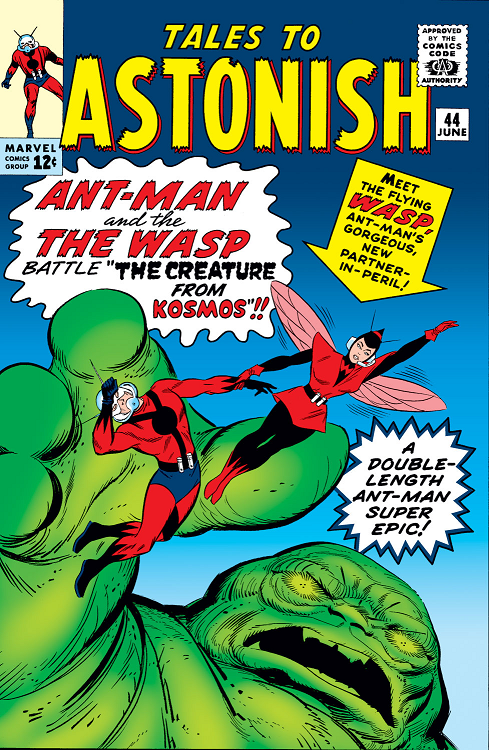
The duo would go on to become founding members of the Avengers a few months later in September 1963. In a collection of interviews entitled “Stan Lee: Conversations,” edited by Jeff McLaughlin, Stan Lee claimed that Ant-Man was never one of Marvel’s top sellers and thus was never given his own book. My impression is that Marvel did not have a cohesive vision of what they wanted to do with his character. For instance, Hank Pym switched gears and became Giant Man only a few months after joining the Avengers as Ant-Man.
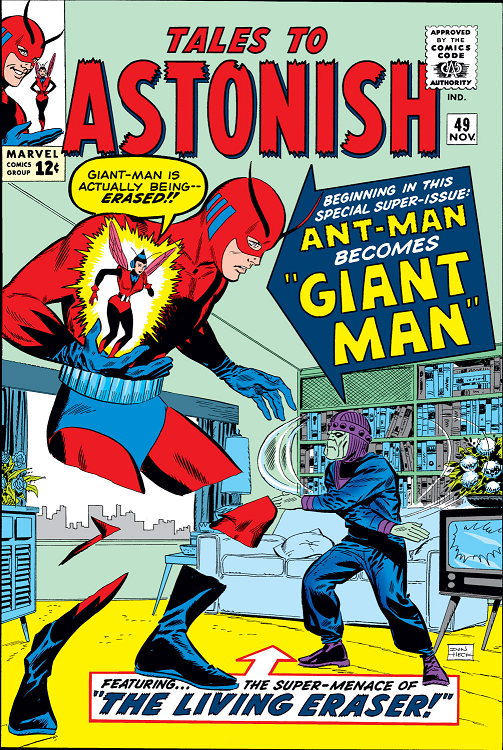
Afterward, Giant Man and Wasp co-starred in Tales to Astonish. Starting with issue 60 they shared that series with the Incredible Hulk. However, the Sub-Mariner replaced Giant-Man and the Wasp and co-starred with the Incredible Hulk starting with Tales to Astonish #70 in August 1965. Giant-Man and the Wasp left the Avengers during Avengers #16 in May 1965, but returned a year later in Avengers #28 in which Hank Pym rebranded himself as Goliath. Then Hank had a bout of madness during which he forgot his true identity and about a Wasp-like identity of the Yellowjacket instead. He also married Wasp while suffering this mental breakdown (!), but they stayed together even after he regained his normal identity and personality.
Eventually, Clint Barton, a.k.a. Hawkeye, gave up his bow and arrows and assumed the identity of Goliath in Avenger #63 April 1969 while Hank continued as Yellowjacket. In my opinion, Marvel was trying to see if anything could make Hank Pym popular. (NOTE: Contrary to Marvel’s presumed goal, a later event during the Bronze Age would make Hank Pym even more unpopular!)

(SIDE NOTE: I have not found any Marvel Comics published between 1956 and 1970 which featured giantesses. If anyone knows of such comics please contact me!)
That concludes our examination of Marvel Comics. Throughout this post I have sought to provide an overview of the Silver Age. This was the era when censorship was at its most stringent under the CCA, when super heroes became popular once more, and when Marvel Comics hit their stride and started publishing under that name. Personally, I have a great deal of affection for these comics. As a kid during the 1980s, I found Silver Age comics at affordable prices within discount stores and comic book shops. I loved the imaginative stories found in those old books! In contrast, Golden Age comics were too rare and valuable for my meager budget.
While I haven’t yet fully researched comic book eras beyond the Silver Age, I believe that no other age has produced as many size-changing characters as the Silver Age! That said, the plan is to examining the next comic book age, the Bronze Age, later this year.
That’s it for today folks, I hope this article has provided a little insight into size themes during the Silver Age of American Comic Books. Next week will kick off with a look at some of my favorite CGI artists. Until then dear readers, keep growing!
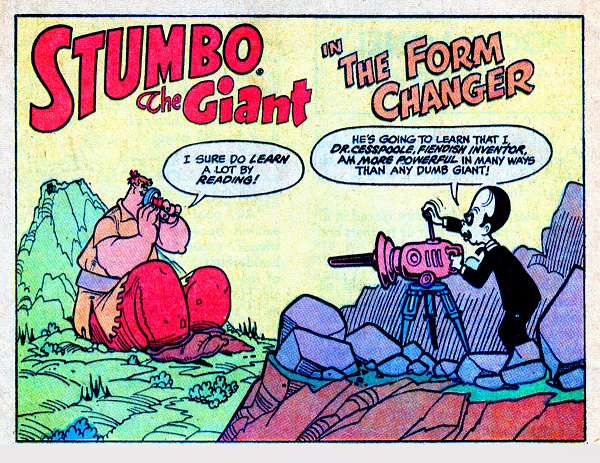
This article is protected under Fair Use copyright law.
All Rights Reserved.


Hey Solo. Why didn’t you mention Giganta during the Wonder Woman segment. She was the only reason that I pick up that title. BTW: If they had made Elasti·girl in the live action series more like her comic book or animated counterpart, I might have watched more than 1 episode.
LikeLiked by 2 people
Hi Darrin, I did mention Giganta during the Golden Age post. Giganta first appeared in Wonder Woman No. 9 from 1944, thus during the Golden Age. However, she did not have size-changing powers until 1978 during the animated Hanna-Barbera TV series “Challenge of the Super Friends.” Until then, she was just a circus strong woman evolved from an ape!
Thus, she wasn’t a giantess in the Golden or Silver Age, and she was a giantess on TV decades before becoming a giantess in print.
Frankly, I think DC Comics forgot about Giganta for a long time. As evidence, she didn’t even rate an entry in the “Who’s Who” series from the mid-1980s. The issue which covered characters starting with “G” casually skips over her, going from “Ghost Patrol” to “G.I. Robot/Gizmo”! Later on, Giganta gained the growing power she first demonstrated in Challenge of the Super Friends, but surprisingly she couldn’t do that until August 2006 in Wonder Woman Vol. 3 Issue 1. So, that was about 28 years after she gained the power on TV.
I’m curious, what comics did you pick up with Giganta as a giantess? Do you have any before 2006?
Lastly, I too would love to see Rita in live-action with her classic powers!
LikeLiked by 1 person